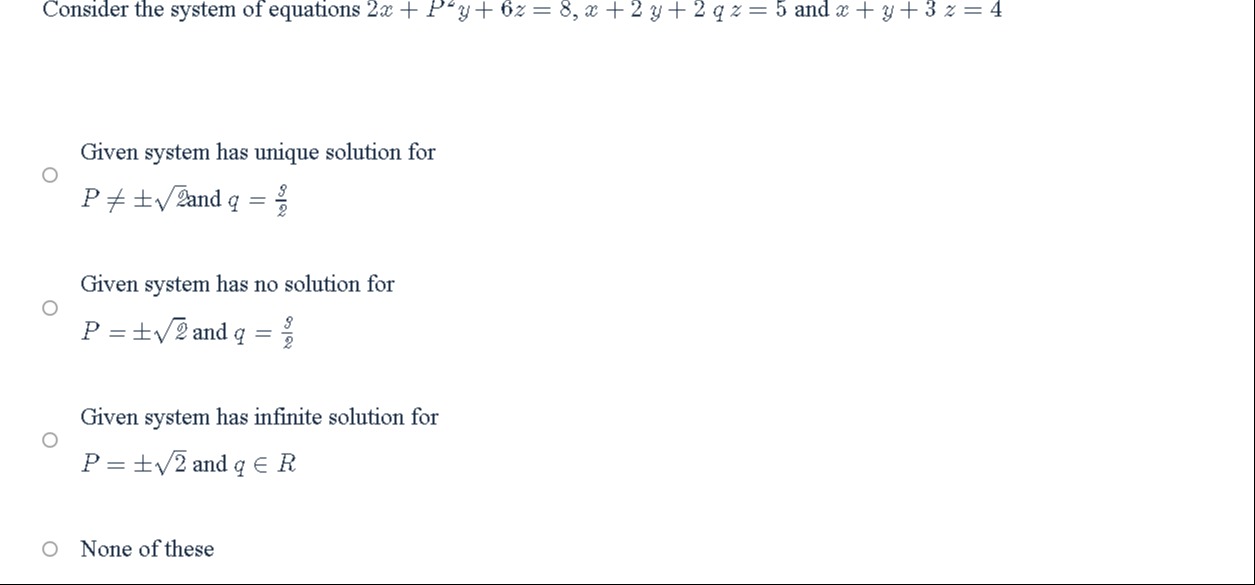Question
Question: Consider the system of equations $2x + P^2y + 6z = 8, x + 2y + 2qz = 5$ and $x + y + 3z = 4$...
Consider the system of equations 2x+P2y+6z=8,x+2y+2qz=5 and x+y+3z=4

Given system has unique solution for P=±2 and q=23
Given system has no solution for P=±2 and q=23
Given system has infinite solution for P=±2 and q∈R
None of these
Given system has infinite solution for P=±2 and q∈R
Solution
For P=±2, equation (1) becomes identical to equation (3), reducing the system to 2 equations in 3 unknowns which always have infinitely many solutions regardless of q.
Step 1: Write the coefficient matrix
A=211P22162q3.The determinant is
det(A)=2212q3−P2112q3+61121.Calculate the 2×2 determinants:
det(212q3)det(112q3)det(1121)=2⋅3−1⋅2q=6−2q,=1⋅3−1⋅2q=3−2q,=1⋅1−1⋅2=−1.Thus,
det(A)=2(6−2q)−P2(3−2q)+6(−1)=12−4q−P2(3−2q)−6, det(A)=6−4q−P2(3−2q).Rewriting,
det(A)=6−3P2+(2P2−4)q.Notice that if P2=2 (i.e. P=±2), then
det(A)=0if(2P2−4)q=3P2−6.Since
3P2−6=3(P2−2)and2P2−4=2(P2−2),we get
q=2(P2−2)3(P2−2)=23.Thus, for P2=2, the determinant is zero when q=23 and nonzero when q=23. Hence, a unique solution exists for P=±2 and q=23.
Step 2: Consider the case P2=2 (i.e. P=±2).
For P=±2, equation (1) becomes
2x+2y+6z=8⟹x+y+3z=4,which is exactly the same as equation (3). Thus, the system reduces to
x+y+3zx+2y+2qz=4,=5.This is a system of 2 equations with 3 unknowns. They are consistent (subtracting, we get y+(2q−3)z=1 which always has a solution with a free parameter), so the system has infinitely many solutions for any q.
